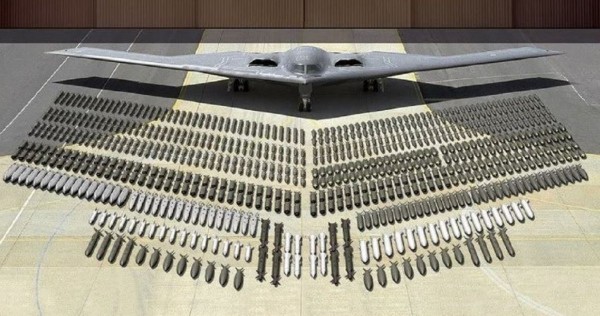China Claims its New ‘Quantum Radar’ Makes all US Stealth Combat Aircraft Obsolete
| Arthur Dominic Villasanta | | Sep 23, 2016 10:22 PM EDT |
(Photo : USAF) U.S. Air Force B-2 Spirit stealth bomber shows-off its mammoth bomb load.
A tech company owned by China's central government has announced the development of a new kind of "quantum radar" it claims can detect U.S. military stealth jets 100 kilometers distant, according to different state-controlled media outlets.
The 14th Institute of China Electronics Technology Group Corporation (CETC), one of the 10 leading military-industrial groups owned by the Communist Party of China, said the new "single-photon quantum radar system" relies on a quantum physics phenomenon called quantum entanglement to uncover stealthy aircraft.
Like Us on Facebook
It also said it had successfully tested this quantum radar but has offered no proof. It said this distance of 100 km is five times the "potential range" of a laboratory prototype jointly developed by researchers from the United States, Canada, Germany and the United Kingdom in 2015.
Quantum radar is based on the theory of quantum entanglement and the idea that two different particles can share a relationship with one another to the point that, by studying one particle, you can learn things about the other particle that could be a million miles away. These two particles are said to be "entangled".
The incredibly difficult physics a quantum radar would have to overcome is also raising eyebrows in the west and in Chinese scientific circles. One expert said he was very skeptical a quantum radar will ever see the light of day outside of the lab.
A physicist at China's Nanjing University (which is where the 14th Institute is located) was quoted as saying "serious technical challenges had long confined quantum radar technology to the laboratory."
CETC said China's first quantum radar system has "important military application values" because it used entangled photons to identify objects "invisible" to conventional radar systems.
It said its breakthrough was helped largely by the rapid development of single-photon detectors that allow researchers to capture reflected photons with a high degree of efficiency. CETC said the field test opened a "completely new area of research" with the potential for building highly mobile and sensitive radar systems able to survive the most challenging combat environments.
CETC said quantum radar systems can be small and will be able to evade enemy countermeasures such anti-radar missiles because the quantum entanglement can't be traced.
It worked with quantum scientists at the University of Science and Technology of China in Hefei, Anhui province, where many quantum technology breakthroughs have been achieved.
Chinese media reported Chinese scientists as being shocked by the revelation because the idea of quantum radar remains largely confined to science fiction.
Physicist Professor Ma Xiaosong at Nanjing University, who has studied quantum radar, said he has "not seen anything like this in an open report."
Quantum radar works by generating a huge number of entangled photon pairs. Shooting the twins of these entangled photons into the air provides information about an object in the vicinity. The returning photons can distinguish the shape, location, speed, temperature and even the chemical composition of the aircraft's paint.
TagsQuantum Radar, china, China Electronics Technology Group Corporation, quantum entanglement
©2015 Chinatopix All rights reserved. Do not reproduce without permission
EDITOR'S PICKS
-

Did the Trump administration just announce plans for a trade war with ‘hostile’ China and Russia?
-

US Senate passes Taiwan travel bill slammed by China
-

As Yan Sihong’s family grieves, here are other Chinese students who went missing abroad. Some have never been found
-

Beijing blasts Western critics who ‘smear China’ with the term sharp power
-

China Envoy Seeks to Defuse Tensions With U.S. as a Trade War Brews
-

Singapore's Deputy PM Provides Bitcoin Vote of Confidence Amid China's Blanket Bans
-

China warns investors over risks in overseas virtual currency trading
-

Chinese government most trustworthy: survey
-

Kashima Antlers On Course For Back-To-Back Titles
MOST POPULAR
LATEST NEWS
Zhou Yongkang: China's Former Security Chief Sentenced to Life in Prison

China's former Chief of the Ministry of Public Security, Zhou Yongkang, has been given a life sentence after he was found guilty of abusing his office, bribery and deliberately ... Full Article
TRENDING STORY

China Pork Prices Expected to Stabilize As The Supplies Recover

Elephone P9000 Smartphone is now on Sale on Amazon India

There's a Big Chance Cliffhangers Won't Still Be Resolved When Grey's Anatomy Season 13 Returns

Supreme Court Ruled on Samsung vs Apple Dispute for Patent Infringement

Microsoft Surface Pro 5 Rumors and Release Date: What is the Latest?














